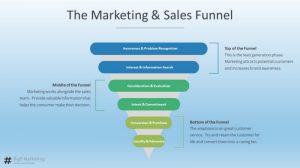 What can your small business learn from Harley Davidson’s recent stock plunge? Even when you’re not a big, publicly-traded company, there are four, important take-aways from Harley’s experience:
What can your small business learn from Harley Davidson’s recent stock plunge? Even when you’re not a big, publicly-traded company, there are four, important take-aways from Harley’s experience:
Sometimes Sales Matter More Than Earnings
Sure, we all want to make money. But whether you’re building a small company or you’re an established icon like Harley, your business will always be driven by sales. In its recent 1st quarter results, Harley reported earnings that actually beat analysts’ expectations, but its disappointing 3% decrease in sales overshadowed its increased profits. That made investors, in turn, skittish enough to create an instant 10% plunge in its stock price. Regardless of how much profit Harley made, investors knew that a drop in sales can signal trouble faster than a drop in earnings.
Always Pay Attention to Your Competition
While this should be obvious, it’s easy to get complacent when you assume you have a unique product that gives you a good share of the market. But even the best product won’t protect you from the whims of a free market. One of the reasons Harley gave for its poor sales was aggressive discounting by its competitors, making their cheaper but similar products more attractive to Harley’s customers. Although you want to avoid diluting your product’s value by discounting too much, it’s always a good idea to keep an eye on your pricing relative to the rest of the market.
Listen To Your Customer Base
Sales performance is a lot like politics—it’s about playing to your base while trying to potentially please a broader audience. Harley’s biggest sales drop was in its line of special, custom bikes, which were supposed to appeal to a new, baby-boomer market eager to re-discover the open road. The reality however, spoke louder—baby boomers weren’t flocking to custom “choppers.” Instead, customers preferred Harley’s basic touring bikes, with windshields, more comfortable seats, and larger fuel tanks. The base spoke, and Harley didn’t listen.
Be Prepared For Things Out of Your Control
One of the most important factors that led to Harley’s sales drop was the very thing they could least control—bad weather. The loss of revenue from a devastating winter of excessive snowfall in the Northeast was only partially offset by Harley’s sales from the milder West. Even the most die-hard bikers couldn’t ignore over 100 inches of snow in Boston alone, and the rest of the Northeast didn’t fare much better.
And if you think that your product or service has absolutely nothing to do with transportation and so isn’t weather-dependent…it does. Whether you’re selling widgets that have to be moved from point A to point B, or your customers need to show up at your door, everything depends on good weather. Even your online customers are affected by storms, power outages, and spotty Internet service. So if your customer can’t get to you, make sure you have a contingency plan. It might mean advance planning during good weather so you can ride out the storm, or more aggressive selling and marketing during the bad weather season, but don’t get caught unprepared for something you can’t control.
Harley learned these lessons the hard way, but with enough forethought and planning, your business can avoid these traps and look forward to an easier ride ahead.
This article appeared originally at GoSmallBiz.com
(186)
Report Post



